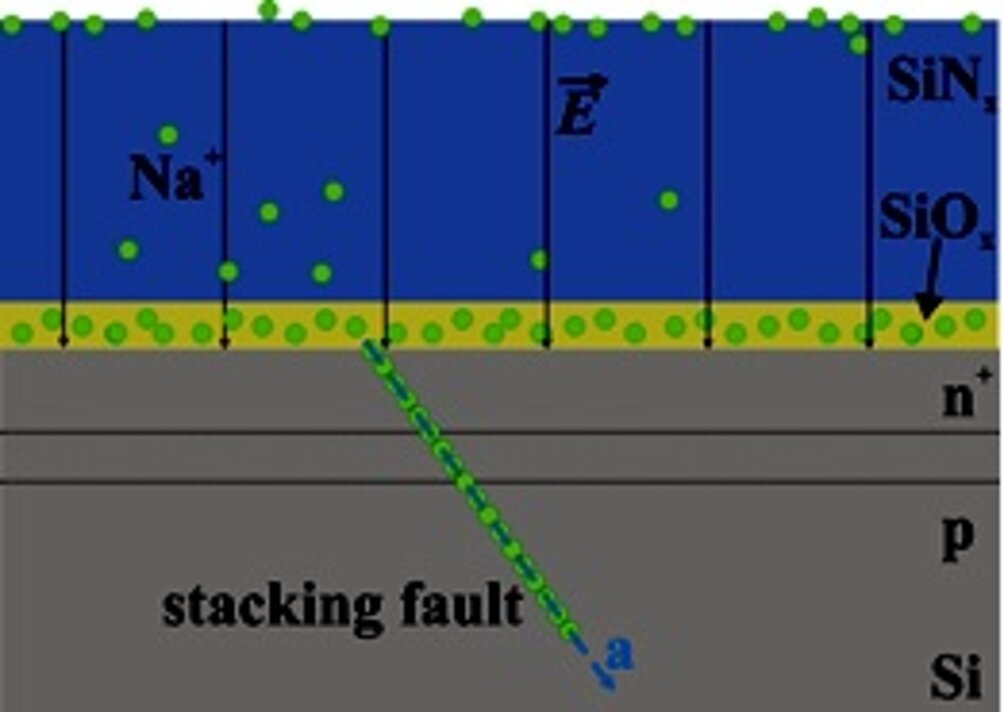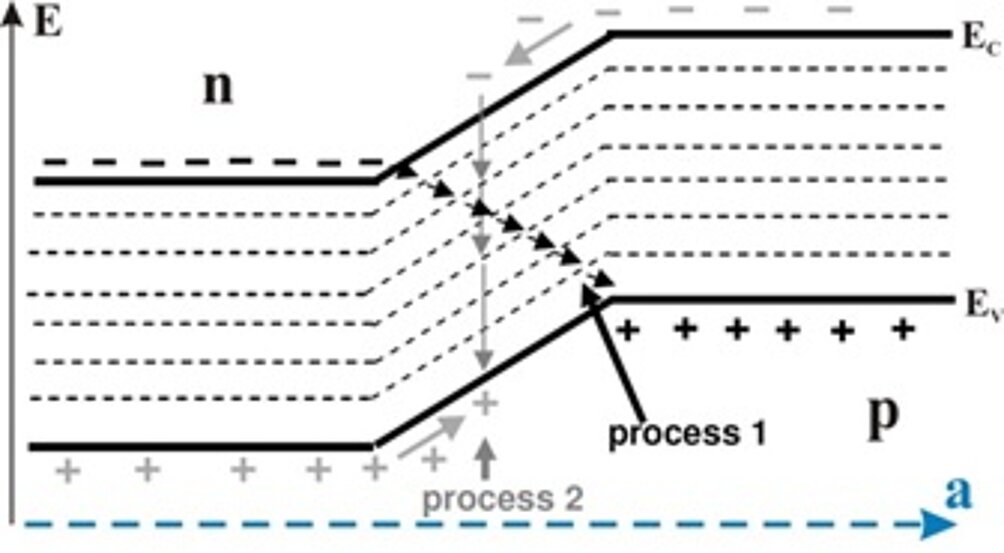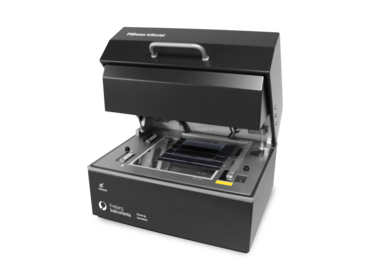In the field a large potential between the front glass surface and the solar cells in a module can occur and a shunting of the p-n junction of a Si solar cell and accordingly a decrease in resistance and power output can be caused.
The following model was proposed by [1]:
The high field strength present in the modules causes a Na+ drift through the SiNx layer. The Na ions diffuse laterally at the SiNx/Si interface (SiOx) and decorate the stacking faults. The pn-junction is shunted through a hopping process via defect levels of the highly decorated stacking fault (process 1) and additionally the J02 increases due to recombination processes via defect states in the depletion region (process 2). Note that the Na ions are supposed to originate from the Si surface and not the glass.
Hence the susceptibility of a module depends mostly on the SiNx layer and the resistivity of the glass and the EVA foil.
For more information, please read:
[1] V. Naumann et al., The role of stacking faults for the formation of shunts during potential induced degradation (PID) of crystalline Si solar cells, Phys. Stat. Solidi RRL 7, No. 5 (2013) 315-318


Matching Products
Get in touch
Do not hesitate to contact us – we are available to assist you with any inquiries or requests.
Use our inquiry tool or reach out via email:
sales@freiberginstruments.com
